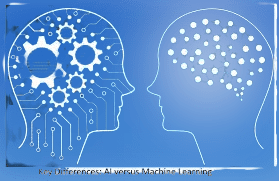ARTIFICIAL INTELLIGENCE(AI), MACHINE LEARNING(ML),DEFINITION, USES
In this article we will understand the basic concept of ARTIFICIAL INTELLIGENCE and MACHINE LEARNING. In the present 21st century as technology is getting advanced, the use of ARTIFICIAL INTELLIGENCE and MACHINE LEARNING are on the rise. For Our readers/users Readers/users who are very much acquainted with latest technologies will find the below article with … Read more
